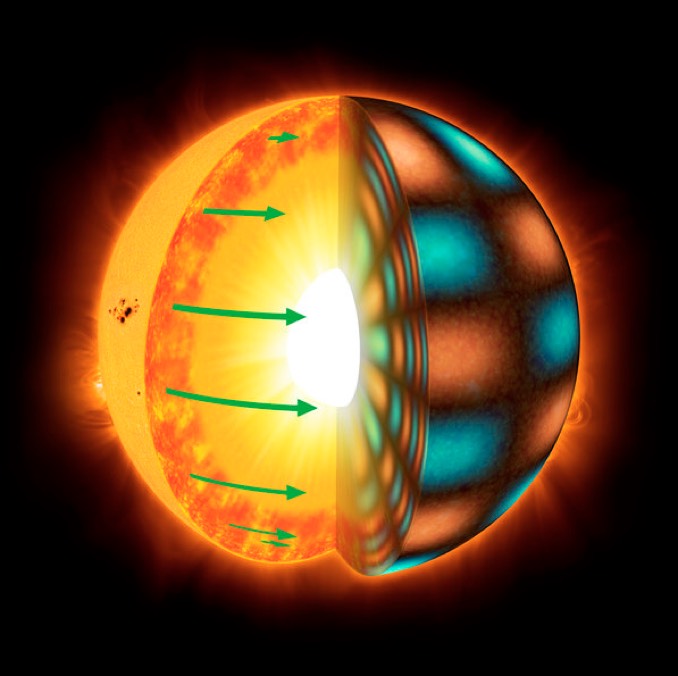
Sunspots have been observed for centuries, with the first written records made by Chinese astronomers in 364 BC. In 1612, Galileo observed sunspots and concluded the Sun was rotating.
But astronomers now know stars do not rotate like solid spheres; different latitudes rotate at different velocities, a phenomenon known as “latitudinal differential rotation.” One full rotation takes 25 days at the Sun’s equator, but about 31 days near the poles. Differential rotation is thought to play a major role in generating magnetic fields and sunspots.
Now, researchers with New York University, the Max Planck Institute for Solar System Research (MPS) and the University of Göttingen have measured differential rotation patterns in 13 stars with masses similar to the Sun’s, finding faster equatorial speeds as expected.
But they were surprised to find the measured velocities were higher than those observed with the Sun, with equatorial regions rotating up to twice as fast as higher latitudes. The discrepancy was not predicted by numerical models.
The velocities were calculated based on the effects of acoustic oscillations generated by convective cells in the stars’ outer layers. The frequencies of those oscillations were used to determine how fast different latitude zones were rotating.
“Using observations from NASA’s Kepler mission, we can now probe the interior of stars with asteroseismology and determine their rotational profiles at different latitudes and depths,” said Laurent Gizon, director at MPS.
“Modes of oscillation that propagate in the direction of rotation move faster than the modes that propagate in the opposite direction, thus their frequencies are slightly different,” he said. “Our best measurements all reveal stars with solar-like rotation.”
The research shows the potential of asteroseismology for probing stellar interiors.
“Information about stellar differential rotation is key to understanding the processes that drive magnetic activity,” Gizon said. But, he cautioned, large numbers of stars must be studied before researchers will be able to draw conclusions.



